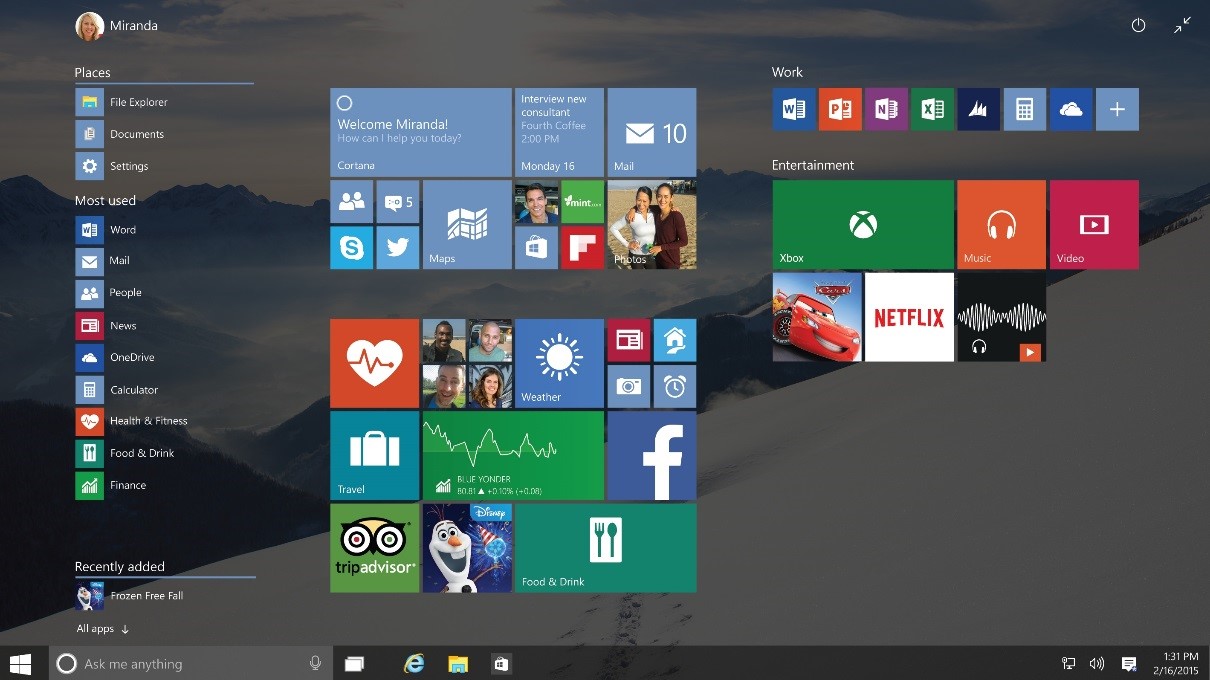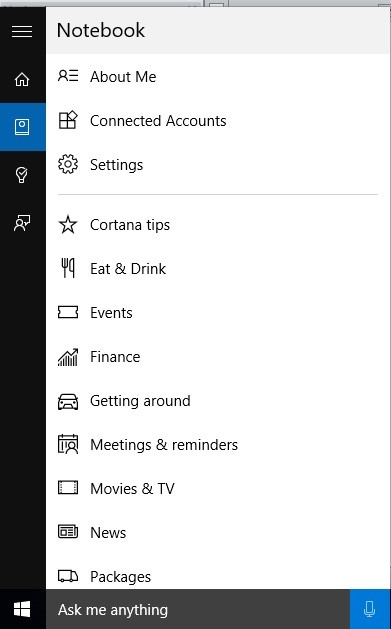Ever since Google’s Android and Apple’s iOS have dominated the mobile operating system (OS) market, Microsoft has been running scared and has realized they cannot rest on their non-mobile products and established business application strongholds. The present and future OS market is heavily about mobile cloud-connected devices and that is why Android holds 78% of the mobile OS market (Fig. 1, 2015). Google’s release of the Chromebook in June 2011 was a quiet nuclear bomb against Windows, thus threatening their personal computer OS leadership.
Microsoft’s counterattack was supposed to be Windows 8.1 in 2012 to 2013 which was designed to run effectively on mobile and traditional devices but as per Fig. 1. their phone market share fell from 3.2% in 2013 to 2.5% in 2014 and then rose only to 2.7% in 2015. These results are horrible for a global software company that dominates the non-mobile OS and business application markets with more than 1.5 billion daily users according to Corporate Vice President of Education Marketing at Microsoft, Tony Prophet (2014). Windows 8.1 did not go over well because the Microsoft Store has few apps, people did not like the new tile start menu, it is clumsy to navigate, Internet Explorer is slow, and next to no one was inspired to get a Windows Phone because of Windows 8.1.
Fig. 1. Smart Phone OS Market Share

(IDC, May 2015, http://www.idc.com/prodserv/smartphone-os-market-share.jsp)
Windows 10 is supposed to be Microsoft’s comeback album and it’s going to be just as big as Carlos Santana’s 1999 Supernatural album with the hit song “Smooth”. Windows 10 was released on July 29th and so far the reviews are great all bugs aside. To share the love they are giving away free upgrades from Windows 8.1, 8.1 Phone, and 7 for one year. Microsoft never could quite sell the idea to everyone that you didn’t need a start menu. The Windows 8.1 start menu became the start screen, much the same way your tablet or cell phone works with tiles laid out like a board game. Thus Microsoft is bringing back the start menu on the bottom left yet they are leaving a partial live tile display for mobile enthusiasts that can be collapsed or expanded as per Fig. 2.
Fig. 2.
 Windows 10 also introduces a function that allows you to utilize multiple desktops not just screen extensions, and this is a lot like Mission Control from Apple OS X. This will be a big benefit for business users, creative users, students, and people who do a lot of multitasking. The hot key shortcut to open a virtual desktop is: Windows key + Ctrl +D. Windows 10 also adds something new for gamers and graphics focused users, direct X12, which is a Microsoft proprietary graphics card decoder that communicates with and optimizes the many different graphics chips on thousands of computer models. It is the industry standard and that is why it’s used on the hugely popular X-Box. Windows 7 and 8.1 will not get access to direct X12 so graphics will be better on Windows 10. A creative person could even game in one desktop while they work in another assuming they have the RAM and CPU power needed for those specific applications – this is pretty cool. Another interesting visual add is the Windows Snap feature which allows you to split your screen into two, three or four separate areas and the hotkey shortcuts for this are:
Windows 10 also introduces a function that allows you to utilize multiple desktops not just screen extensions, and this is a lot like Mission Control from Apple OS X. This will be a big benefit for business users, creative users, students, and people who do a lot of multitasking. The hot key shortcut to open a virtual desktop is: Windows key + Ctrl +D. Windows 10 also adds something new for gamers and graphics focused users, direct X12, which is a Microsoft proprietary graphics card decoder that communicates with and optimizes the many different graphics chips on thousands of computer models. It is the industry standard and that is why it’s used on the hugely popular X-Box. Windows 7 and 8.1 will not get access to direct X12 so graphics will be better on Windows 10. A creative person could even game in one desktop while they work in another assuming they have the RAM and CPU power needed for those specific applications – this is pretty cool. Another interesting visual add is the Windows Snap feature which allows you to split your screen into two, three or four separate areas and the hotkey shortcuts for this are:
- Windows Key + Left – Snap current window to the left side of the screen.
- Windows Key + Right – Snap current window to the right side of the screen.
- Windows Key + Up – Snap current window to the top of the screen.
- Windows Key + Down – Snap current window to the bottom of the screen.
For years customers have been unimpressed with the slow speed and incompatibility of ad-ons with Internet Explorer. Microsoft made a good move to create an all new browser similar to Google Chrome and it’s included for free with Windows 10. Code named Project Spartan and unveiled as Edge the new browser is up to 112% faster than Chrome according to Business Insider (07/15/15, http://www.businessinsider.com/microsoft-edge-windows-10-faster-than-google-chrome-2015-7). Edge allows you to circle, highlight and write your thoughts directly on web-pages. It also has a very cool reading view that strips out all the ads, sidebars, pop-ups and links, so you can scroll through a single column of text and pictures. However this does not work on all web-sites because some websites have not made the updates for 10. We really like this feature as we have been annoyed by these distractions when reading on-line and we like a lot of people do a lot of on-line reading.
Yet probably the second biggest addition to 10 will be Cortana. This is Microsoft’s digital assistant and promises to be much bigger than other voice assisted programs out there. Cortana is much like Dragon or Siri but much more advanced and integrated into the operating system. It will tell you your schedule and schedule things for you and is also an advanced web encyclopedia. It will learn more about you based off of Microsoft’s cloud databases which you can opt to share information with, including your e-mails, phone numbers, and web search data.
Fig. 3.
 After upgrading to Window’s 10, we weren’t sure if we would use Cortana, but the more we use it the more we like it. In playing around with Cortana, you can provide feedback with screenshots that go right back to the teams at Microsoft. To prepare for the 10 release Microsoft was using an estimated five million external testers known as “insiders” to get this type of bug feedback. This impressive number is a considerable increase from prior releases. Cortana is easy to locate in the bottom left of the screen next to the start menu. We find that if the user types a question in the search bar it will add tips and give you interesting facts each and every day, if you let it. Cortana starts out giving you information on the weather, finance, and sports but you can customize this under notebook settings (Fig. 3). Cortana is very intuitive and can track things for you. If you’re receiving a package, it will tell you the progress or details of that package. Say you’re picking someone up at the airport, Cortana will tell you if the flight is on time.
After upgrading to Window’s 10, we weren’t sure if we would use Cortana, but the more we use it the more we like it. In playing around with Cortana, you can provide feedback with screenshots that go right back to the teams at Microsoft. To prepare for the 10 release Microsoft was using an estimated five million external testers known as “insiders” to get this type of bug feedback. This impressive number is a considerable increase from prior releases. Cortana is easy to locate in the bottom left of the screen next to the start menu. We find that if the user types a question in the search bar it will add tips and give you interesting facts each and every day, if you let it. Cortana starts out giving you information on the weather, finance, and sports but you can customize this under notebook settings (Fig. 3). Cortana is very intuitive and can track things for you. If you’re receiving a package, it will tell you the progress or details of that package. Say you’re picking someone up at the airport, Cortana will tell you if the flight is on time.
We really see Microsoft using Cortana to compete with Google Search and Google Analytics. Much the same way Google uses search on Android, Microsoft can use Cortana to provide different results for what you are looking for on phones, tablets, or computers. This really gives Microsoft a link to future ad and analytics revenue which could seriously challenge Google’s revenue streams.
In summary, Windows 10 is a much better product than prior operating systems and is a real threat to Apple and Google’s OS growth. It is designed for mobile and non-mobile devices and has the ability to exponentially learn about you from your use habits and Microsoft’s big data in the cloud. It is also a threat to Apple because they do not have a touch based OS on their computers but only on their iPads and iPhones. A lot of companies up to this point are still using Windows 7 but we see some of them moving to Windows 10 thus bypassing Windows 8.1. Imagine an HVAC worker, health care worker, or tax assessor having the power of Windows 10 to query their corporate database with Cortana while working in the field customized from their GPS trail.
With Cortana, the cool mobile aesthetics, the useful features of touch, the speed of the Edge browser, the ability to use multiple virtual desktops, the quad split screen, this is a growing hit among consumers. Based off these new upgrades it is much easier to use and much closer to what people are familiar with from previous versions of Windows yet it is still creatively different. We think app makers who have focused much of their energy in the past on the Android and iOS platforms will be forced to make more apps for Windows 10 and this will force more phone makers to sign on with Windows 10. We predict Windows 10 in conjunction with Microsoft’s own proprietary devices like the Surface will help them gain a lot more of the mobile OS market in the next 18 months thus driving Microsoft’s stock price above $55-$60 per share.
Jeremy Swenson and Mike Cassem are two seasoned, Intel certified, retail technology marketing and training representatives on assignment at Best Buy for clients including Intel, Trend Micro, Adobe, and others. Tweet to them @jer_Swenson and @micassem.



3 Comments. Leave new
I have upgraded to Windows 10 and yes, it is the best version of Windows. However, I foresee PC numbers continuing to drop as people increasingly move toward mobile platforms. Although Microsoft’s idea of essentially making all of the Windows developers mobile developers by using the same OS was sound, the market place has shown that people want simpler easier to manage devices like IOS and Android. I see Windows 10 as a good OS, but one that people no longer want, and another step towards irrelevance for Windows and Microsoft.
Colin, I know where you’re coming from but I respectfully disagree for the following reasons:
1) Microsoft and Windows have been tried and true over many more decades than Google and Android. Observing this, large companies have deep relationships with Microsoft as do partner software makers. Additionally, Microsoft’s business services and software can command a high dollar from many companies while most companies will only try the free versions of the Google business products, except for maybe marketing or search focused firms. Google can’t keep giving away their products for free or nothing without diminishing their own brand.
2) Google’s tremendous growth has been irrational and too fast and cannot be sustained at the current rate. There are no stocks that keep going up like this without major problems or corrections. Although Google does well with search, analytics, and Android, these categories are constantly changing and one small misstep could backfire on them. It is true that Google has made some great acquisitions yet Microsoft can make those same type of acquisitions.
3) At present most phone supply chain contracts limit Windows 10’s ability to migrate to other phone makers. As customers phone contracts expire over the next two years that will give Windows 10 time to improve and partner with phone makers and app makers – noting smart phone customers change their phones more often than their computer. Yet let’s not forget that Microsoft’s separate Nokia Lumia series has been doing better this year. From Q1 2014 to Q1 2015 Microsoft had a 28% increase in sales of Lumia smartphones with 10.5 million sold bringing in $2.3 billion in sales (http://www.cnet.com/news/microsoft-finds-foothold-in-hardware-as-surface-lumia-sales-soar/). There are also a number of enhanced Lumia’s on target to be released this year so that may pull more people from iOS and Android.
Jeremy,
I see the case you are making for Windows 10 helping Microsoft compete with Google & Apple on Mobile space. However I think it’s a bit far-fetched.
1. Usage of Microsoft mobile product in retail area is not encouraging, this can be inferred with the statistics you presented in the blog. The improvement in sales of Nokia Lumia for one quarter is not an indication of a trend and is inconsequential when pitted against the absolute number of sales of Android & IOS devices. You have to consider the fact that soon Nokia would be releasing mobile devices with Android in it and its impact on Nokia Lumia sales.
2. Usage of Microsoft mobile products in corporate area, I don’t see any large scale Microsoft adoption trends on this area too. From my personal analysis, most of the corporates are moving towards Mobile applications working on Android & IOS (as these are the prevalent operating systems).
3. However, I do see Microsoft doing much better in Mobile Apps space, i.e. if Microsoft can transfer their current desktop product users (both corporate & retail) to mobile application successfully. If they can do this, then they would get a large chunk of users who could be potential targets for cross selling other applications.
Thanks,
Subha